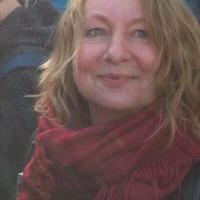Tjarda de Haan is Guest Curator for E-culture at Amsterdam Museum in the Netherlands
Since winning the Digital Preservation Award 2016 in the category The National Archives Award for Safeguarding the Digital Legacy in December 2016 our project accelerated! We have published the 'DIY Handbook for Web Archaeology' and the 'FREEZE! A manifesto for safeguarding and preserving born-digital heritage' and with this we have put web archaeology on the map in the Netherlands. Many initiatives took up the challenge. The KB National Library of the Netherlands has done some remarkable excavations, journals have published articles about web archaeology and the Journal for Media History will publish a special issue next year 'Media history for the future: Web Archaeology'.
Data is the new clay, scripts are the new spades and the World Wide Web is the youngest layer that we are digging up. Web archaeology is a new area in e-culture where we excavate and reconstruct relatively new (born-digital) objects, which were lost not so long ago, using new digital tools. Both the archaeological finds and the methods of unearthing and reconstructing our digital past are very recent and still in development.
In the 'DIY Handbook for Web Archaeology', intended for heritage professionals, we get started at once, bit by bit, byte by byte. We not only show how digital archaeology can be used to ‘dig up’ a digital heritage object, we also show how you can safeguard your archaeological finds and preserve them for future generations. The DIY Handbook is a step-by-step guide with practical tools for setting up and carrying out a web archaeology project. To give substance to the new discipline of web archaeology, we immediately translate our theory into practice using the case study ‘The Digital City Revives’. The Digital City (DDS) case study is a running theme throughout the DIY Handbook. We answer the following questions: How do you dig up DDS and transform it from a virtual Atlantis into a virtual Pompeii? How do you reconstruct, store, unlock and present your DDS material in a sustainable way for future generations?
The 'FREEZE! A manifesto for safeguarding and preserving born-digital heritage' lays out the actions the creators, heritage professionals and policy makers need to take today to safeguard born-digital heritage. It takes three to tango: Ensuring that our digital lives and digital creativity are not lost to future generations requires a joint effort by the principal players.
Our project partner The Netherlands Institute for Sound and Vision is, as we write, working hard on preserving sustainably the digs of DDS and will publish about this in the special edition of web archaeology in the Journal for Media History.
We are also very proud that our project has been nominated in the category ‘Culture & Tourism’ and made it on the shortlist 2018 of the World Summit Awards. The World Summit Awards are an initiative of the United Nations to promote the best digital innovations with social impact worldwide.
We welcome you in the Amsterdam Museum at the World Digital Preservation Day on 29th November 2018!
Amsterdam Museum
Project Partners: The Netherlands Institute for Sound and Vision, University of Amsterdam, Waag Society, The Digital Heritage Network and old inhabitants, (ex) DDS employees and DDS affiliated web archaeologists.
More information:
- 'Do It Yourself Handboek voor Webarcheologie' https://hart.amsterdam/freeze (Dutch)
- 'FREEZE! A manifesto for safeguarding and preserving born-digital heritage' https://hart.amsterdam/freeze (English)
- Factsheet Web Archaeology http://www.ncdd.nl/wp-content/uploads/2017/11/20171128-Factsheet-GB.pdf (English)
- About the project DDS: https://hart.amsterdam/nl/page/33444 (English)
- KB National Library of the Netherlands (one of the projects): Resurrecting the first Dutch web index: NL-menu revisited http://openpreservation.org/blog/2018/04/24/resurrecting-the-first-dutch-web-index-nl-menu-revisited/

Read more...